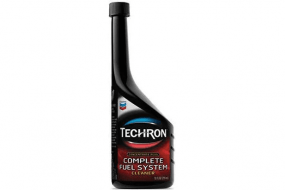
Loctite, a brand synonymous with adhesive solutions, has become a staple in various industries and DIY projects. It is a brand widely recognized for its high-quality bonding solutions and is used in a variety of industrial, commercial, and consumer applications.
However, whether you’re bonding metals, plastics, or other materials, the drying time of Loctite can impact the success of your project. So, how long does Loctite take to dry?
It takes between 60 seconds to 24 hours for a Loctite to dry depending on the type of adhesive used. For example, It takes seconds for Loctite Super Glue Liquid Professional (20g bottle) to dry and set but should be left undisturbed for at least 10 minutes to get a full bond strength.
How Long Does Loctite Take to Dry?
How long it takes Loctite to dry depends on the type of Loctite products you use. As reiterated earlier, Loctite offers a diverse range of adhesives, each tailored to specific applications.
- Loctite Super Glue: Loctite Super Glue is renowned for its fast-acting formula, bonding surfaces quickly and securely. It dries within seconds, allowing for rapid project completion.
- Loctite Epoxy: The drying time of Loctite Epoxy varies based on the specific product. Some epoxies may take 5-10 minutes to set, while others could require several hours for a full cure.
- Loctite Threadlocker: The drying time of a Loctite Threadlocker depends on the specific variant (e.g., low, medium, or high strength). While some thread lockers may set in minutes, others may take up to 24 hours for a full cure.
Therefore, “it takes between 60 seconds to 24 hours for Loctite to dry depending on the Loctite product you used.”
Factors Influencing Drying Time of Loctite Products
The drying time of Loctite products is influenced by a combination of factors, such as:
1. Temperature
Temperature is a critical factor affecting the curing or drying time of Loctite products. In general, higher temperatures accelerate the curing process, while lower temperatures slow it down.
You should adhere to the recommended temperature range specified on the product’s packaging or technical data sheet for better performance.
2. Humidity
Humidity levels can impact the drying time of Loctite products, especially for certain types of adhesives like cyanoacrylates (super glues).
Low humidity tends to expedite the curing process, while high humidity can slow it down. It’s advisable to consider the humidity conditions in the application environment and follow manufacturer recommendations.
3. Surface Type
The type of surfaces being bonded plays a role in the drying time. Porous surfaces may absorb the adhesive differently than non-porous surfaces, affecting the overall curing time. It’s important to ensure that surfaces are clean, dry, and properly prepared for bonding to achieve optimal results.
4. Product Formulation
Different Loctite products have unique formulations tailored to specific applications. The chemical composition of the adhesive or sealant can influence its curing characteristics.
For example, some Loctite products may be designed for rapid curing, while others may offer longer working times for more intricate applications.
5. Product Type
The type of Loctite product being used also affects drying time. For instance, super glues or instant adhesives typically set quickly within seconds, while epoxy adhesives may require more time to cure. Threadlockers, designed to secure threaded assemblies, come in different strengths with varying curing times.
6. Thickness of Application
The thickness of the adhesive layer applied can impact drying time. Thicker layers may take longer to cure compared to thin, uniform coatings.
You should follow the recommended application instructions including guidelines on the appropriate amount of adhesive to be used for a specific application to get a better curing/drying time.
7. Ventilation
Adequate ventilation in the application environment can influence drying time. Improved air circulation can help in dissipating solvents and accelerating the curing process, especially for products that rely on solvent evaporation.
8. Substrate Material
The material of the surfaces being bonded can affect drying time. Different materials have varying levels of porosity and reactivity with adhesives. It’s important to choose a Loctite product suitable for the specific materials involved in the application.
Therefore, to achieve the best drying results, you should carefully consider these drying factors, follow Loctite application guidelines, and, if necessary, conduct tests to determine the ideal conditions for the particular Loctite product and application at hand.
How Can I Make Loctite Dry Faster?
While Loctite adhesives and sealants are designed to cure efficiently under specified conditions, there are some strategies you can employ to expedite the drying or curing process. These strategies are:
- Increase Temperature: You can increase the temperature to make Loctite dry faster because higher temperatures generally accelerate the curing process of adhesives. Ensure that the working environment is within the recommended temperature range specified by the product. Be cautious not to exceed the maximum recommended temperature, as this can also have adverse effects.
- Reduce Humidity: Low humidity levels can expedite the curing of certain types of adhesives, especially cyanoacrylates (super glues). If possible, work in a dry environment or use a dehumidifier to reduce moisture levels.
- Use Accelerators or Primers: Some Loctite products are compatible with accelerators or primers that are designed to enhance bonding and reduce curing time. These additives can be applied to the surfaces before applying the adhesive. However, it’s important to ensure that the primer is compatible with the specific Loctite product being used.
- Apply Thin Layers: Applying thin, uniform layers of adhesive can promote faster curing. Thicker layers may take longer to dry, so be mindful of the recommended application thickness for the specific Loctite product.
- Optimize Ventilation: Improved ventilation can help in dissipating solvents and promoting faster curing. Ensure that there is adequate air circulation in the workspace, especially for products that rely on solvent evaporation for curing.
- Use UV Light (for certain products): Some Loctite adhesives, particularly light-cure adhesives, cure when exposed to ultraviolet (UV) light. If applicable, exposing the adhesive to a UV light source can speed up the curing process. However, this method is specific to certain Loctite formulations.
- Preheat Substrates: For some Loctite products, preheating the substrates can accelerate the curing process. Ensure that the heat applied is within the specified temperature range for the adhesive. You should also ensure the product supports preheating the substrates before doing so to avoid having a bad result.
Before implementing any of these tips, it’s important to check the product’s technical data sheet or contact Loctite’s customer support for recommendations.
Keep in mind that altering the curing conditions may affect the overall performance of the adhesive, so balance the need for a faster cure with the requirement for a strong and durable bond.
If possible, allow the adhesive to cure for at least the minimum recommended time as rushing the curing process excessively may compromise the strength and performance of the bond.
Is 12 Hours Enough for Loctite?
Twelve hours may be sufficient for certain Loctite products while others might require more or less time to cure properly.
For example, many instant adhesives such as cyanoacrylate-based super glues, are designed to set quickly, often within minutes. So, 12 hours is more than enough time for these adhesives to achieve a strong bond.
Epoxy adhesives have longer curing times compared to instant adhesives. While some epoxy formulations may set within a few hours, others might require 12 hours or more for a full cure.
The same goes for thread lockers. While some thread lockers may set within minutes, others may take several hours or even up to 24 hours for a full cure. So, it depends on the type of products Loctite you use.
How Long to Wait After Using Loctite?
You should wait for 24 hours after using Loctite for a full cure. Even though some Loctite products cure within seconds, for it to achieve a strong bound, it will take 24 hours. So, if you have all the time, you can wait for 24 hours to get that full bound.
Moreover, even though instant adhesives such as cyanoacrylate-based super glues, provide initial bond strength within minutes, it’s advisable to wait at least 15-30 minutes before subjecting the bonded materials to stress or load.
After applying epoxy, it’s recommended to wait for the initial setting, which might occur within a few hours. However, waiting 24 hours or more is often recommended for the adhesive to achieve its full strength.
For thread lockers, the initial cure can occur within minutes to a few hours, depending on the specific product variant. While the bond may be functional after the initial cure, it’s advisable to wait 24 hours for the threadlocker to achieve its maximum strength.
Keep in mind that while waiting for the adhesive to cure, avoid exposing the bonded materials to excessive stress, load, or environmental conditions that could compromise the bonding process.
Conclusion
It takes between 60 seconds – 24 hours hours for Loctite to dry depending on the Loctite product used. However, you can speed up the drying time by following the factors explained in this article. You are urged to allow the Loctite products used to be fully bound before exposing it to stress or load.









